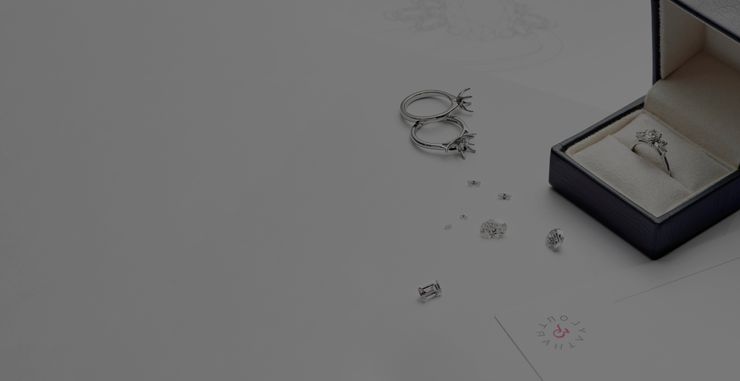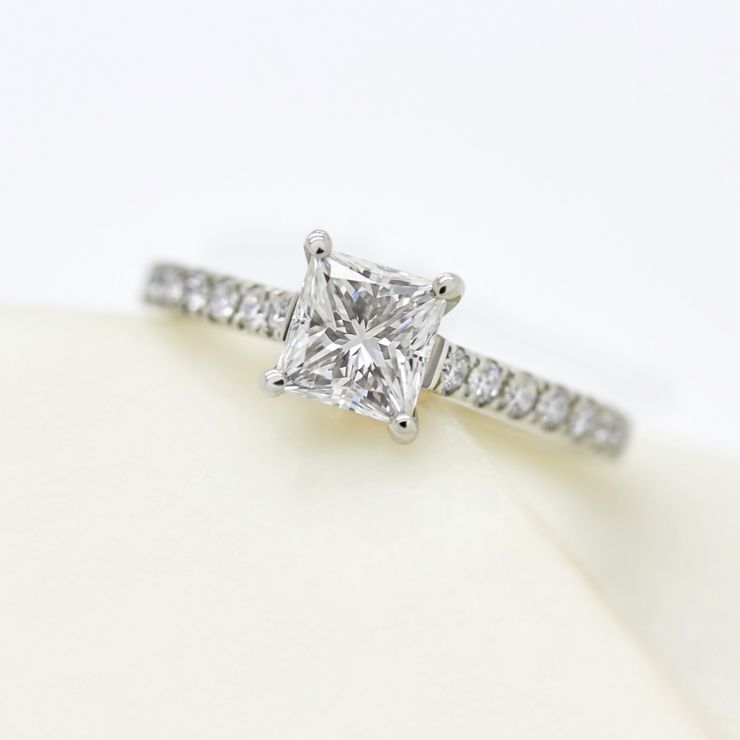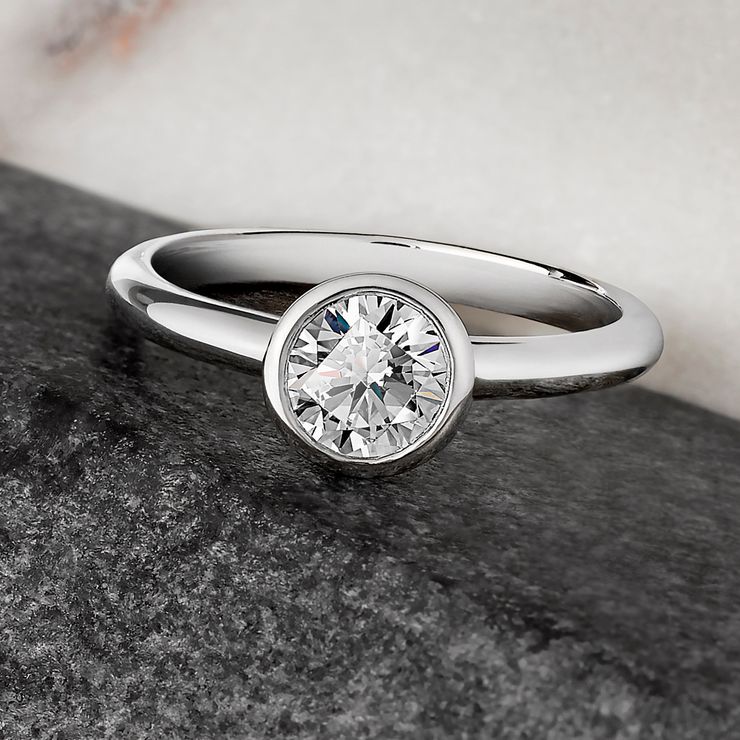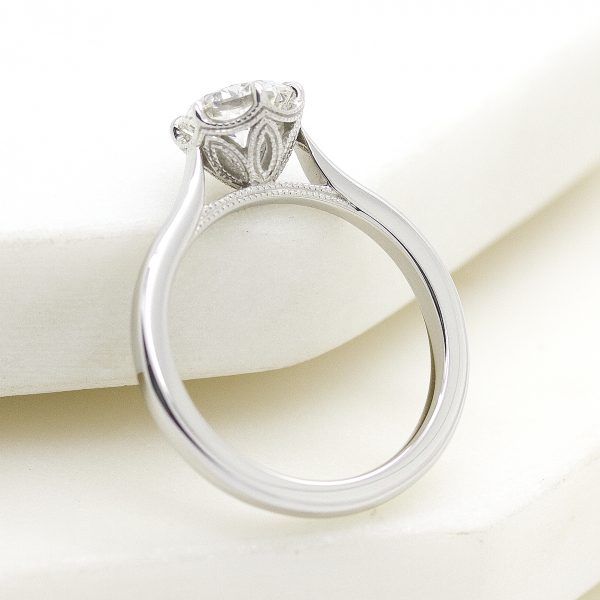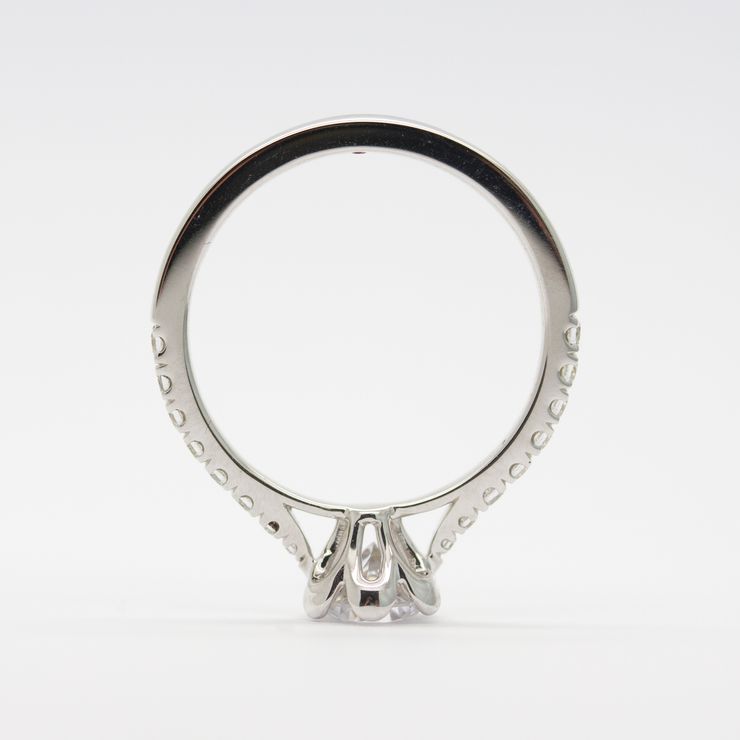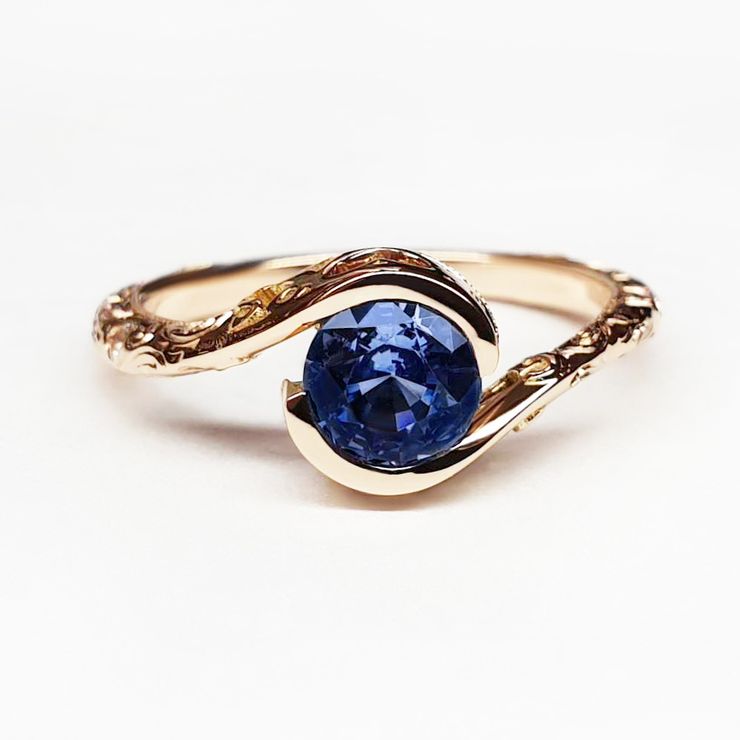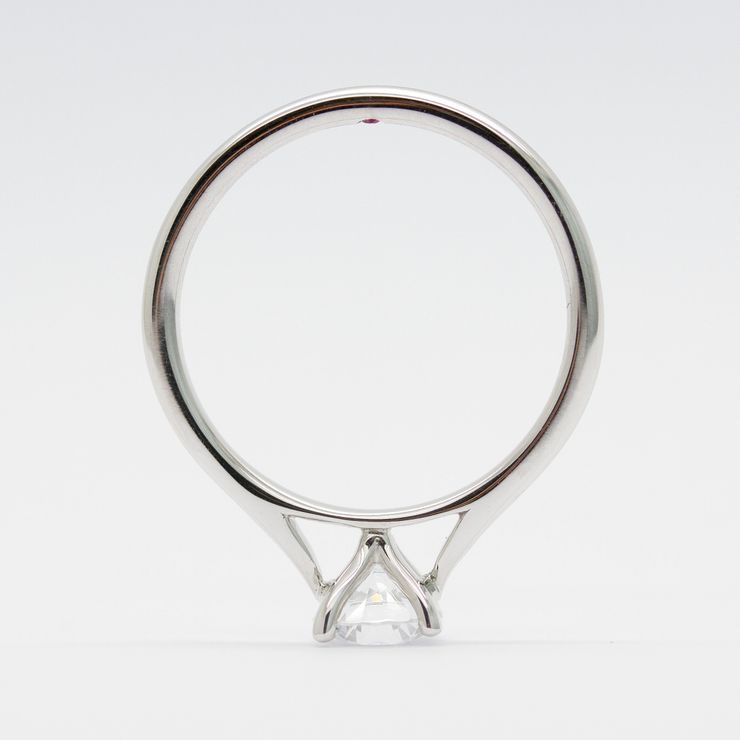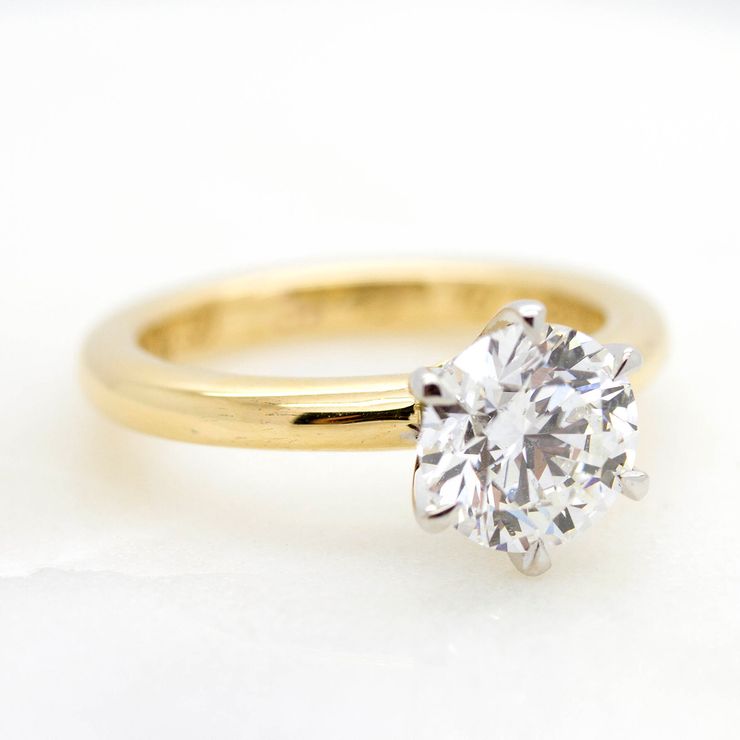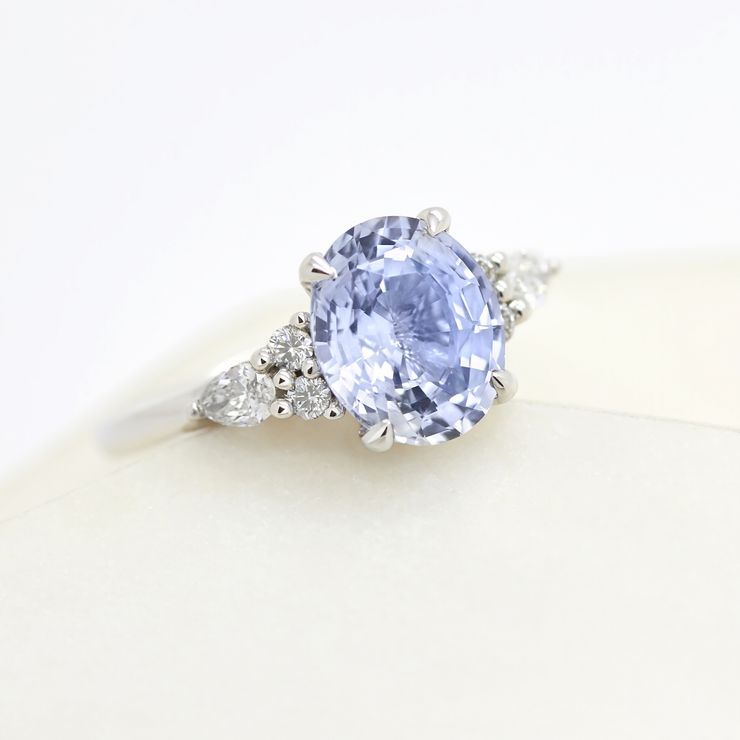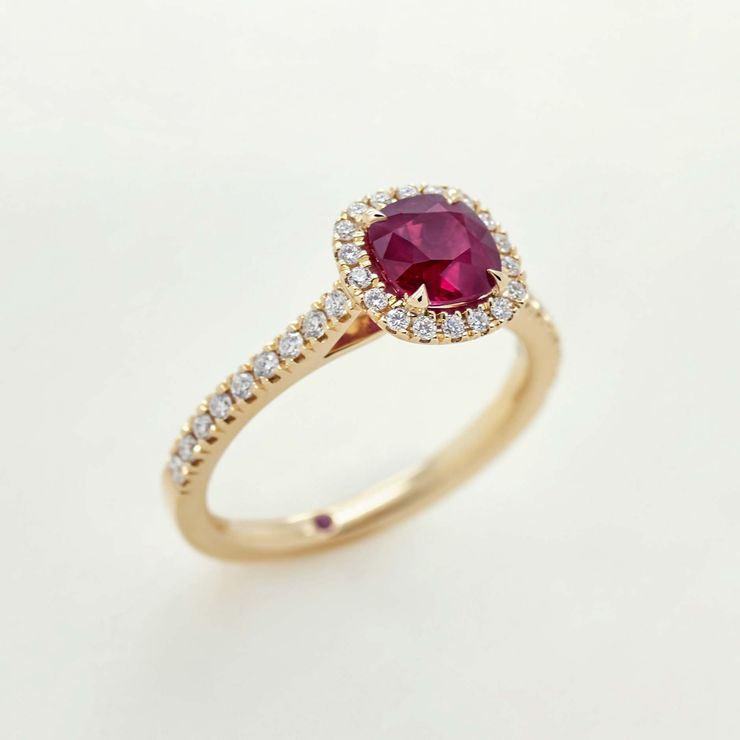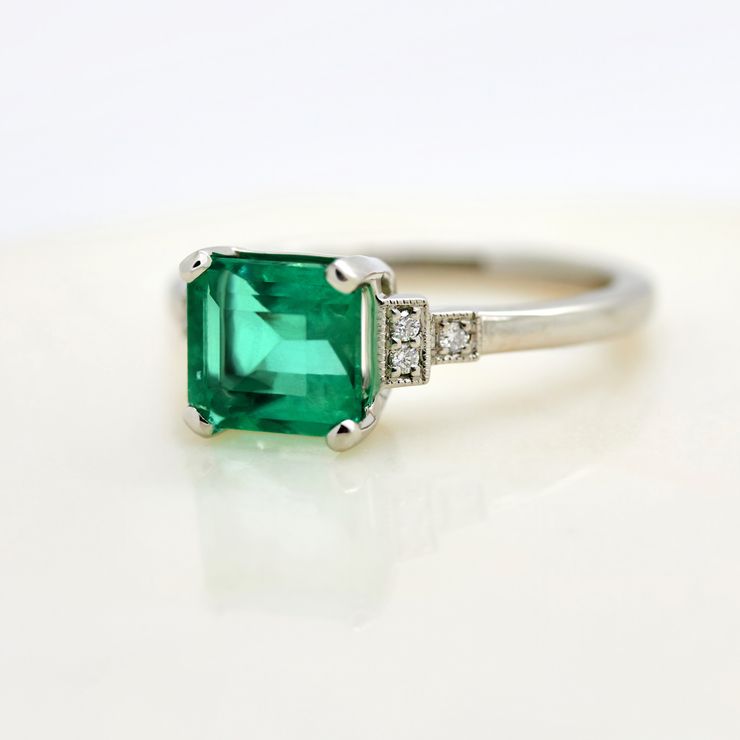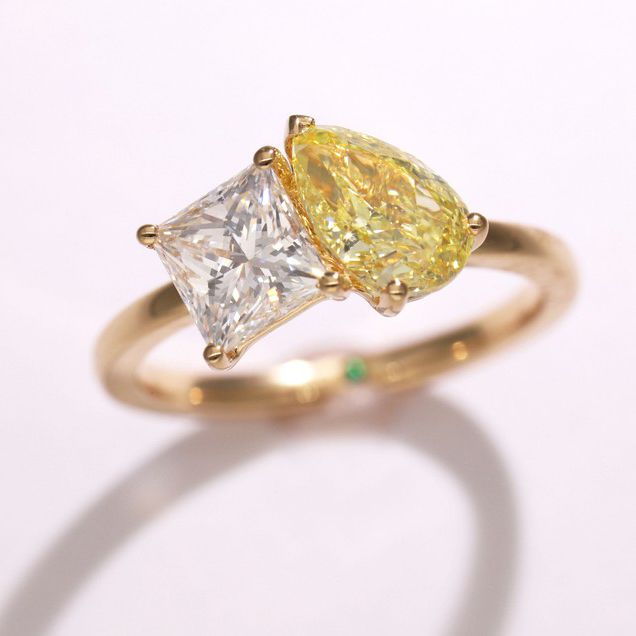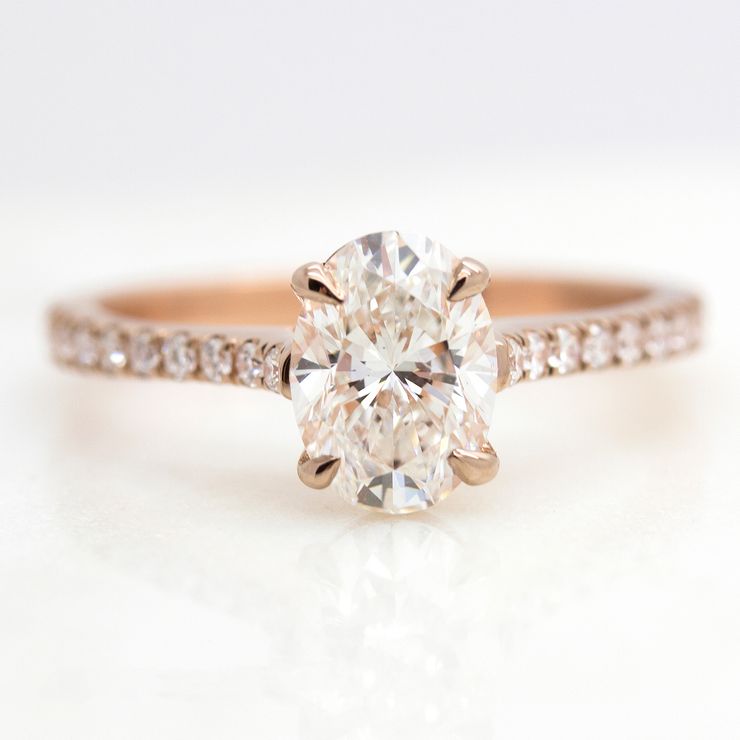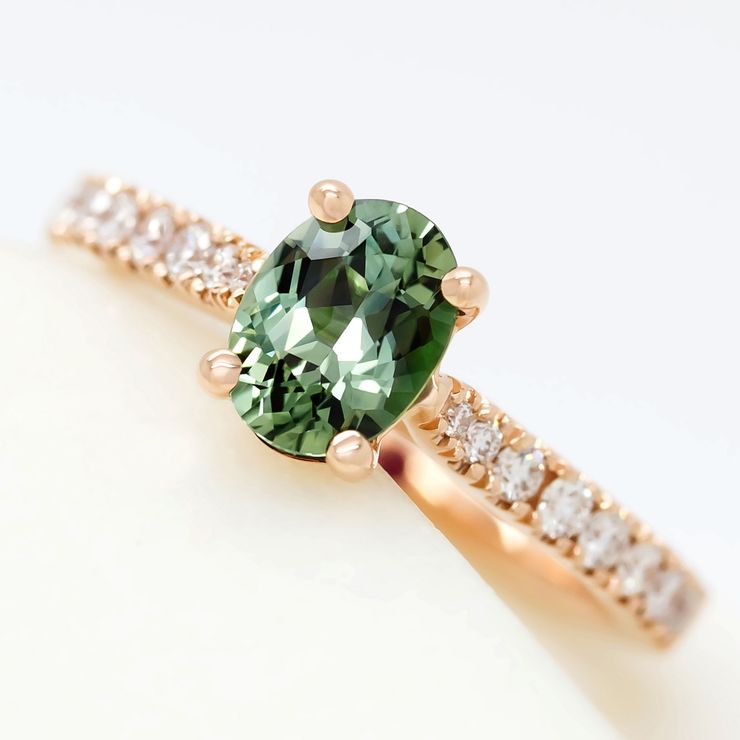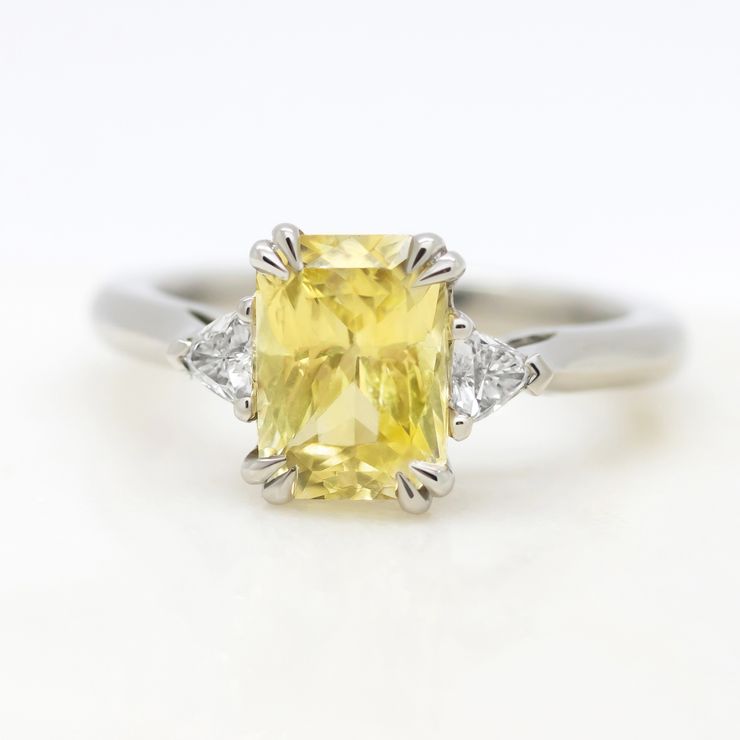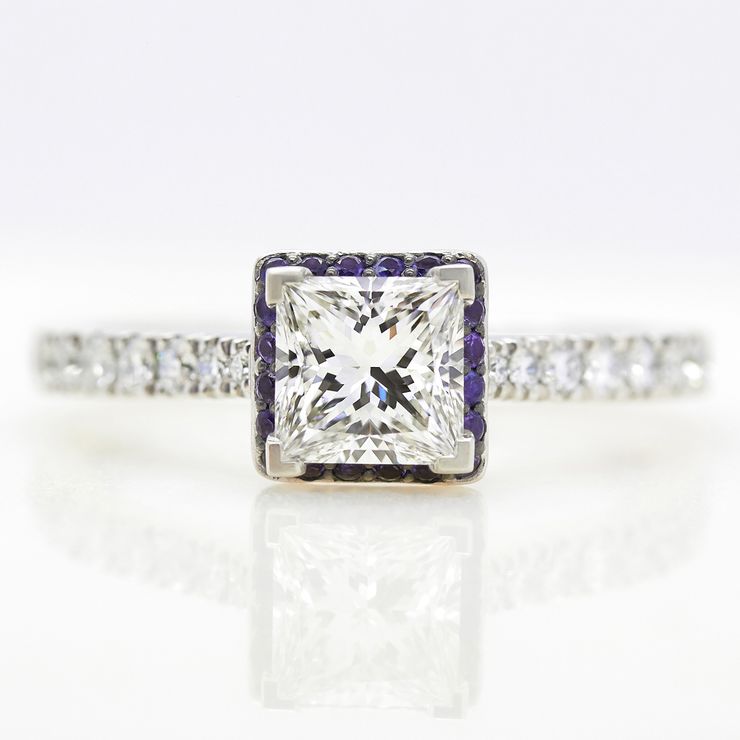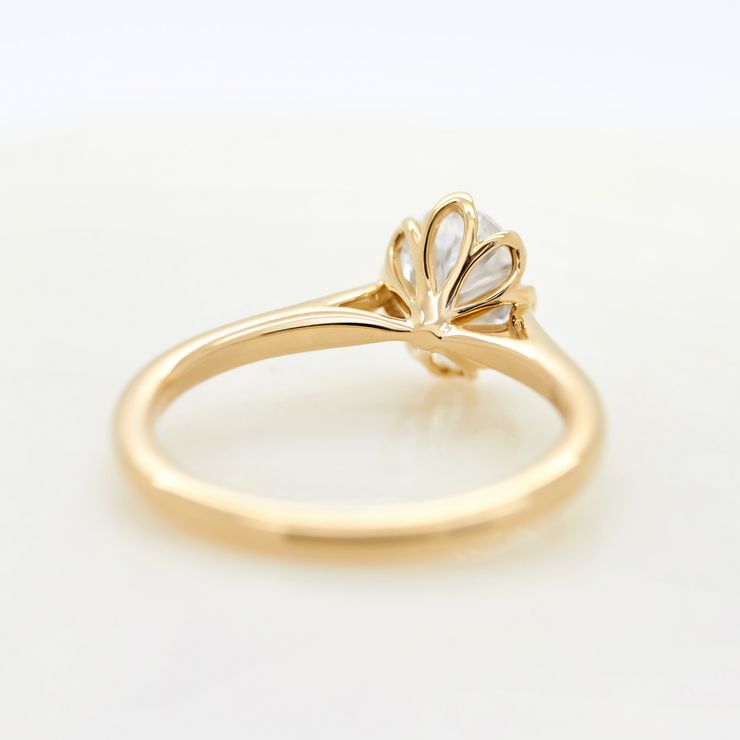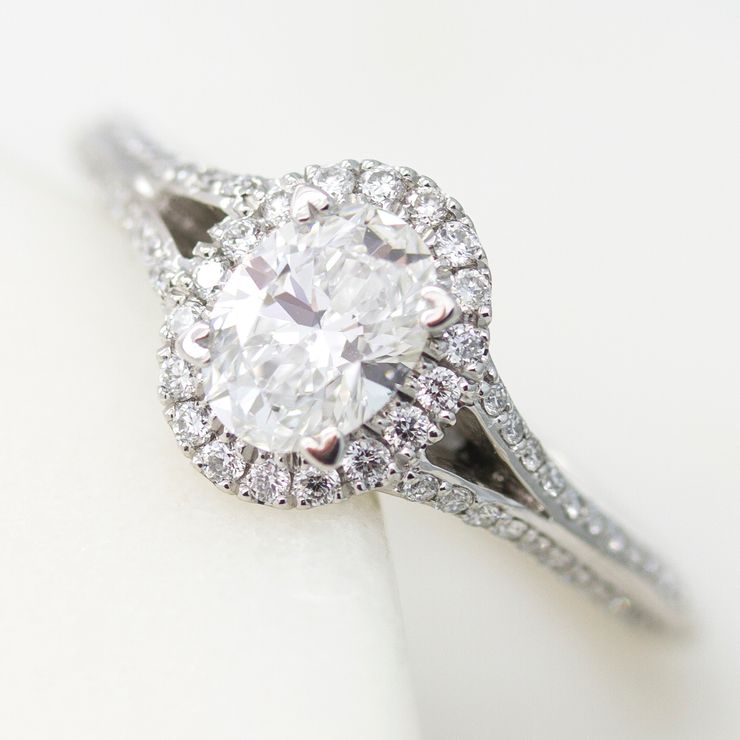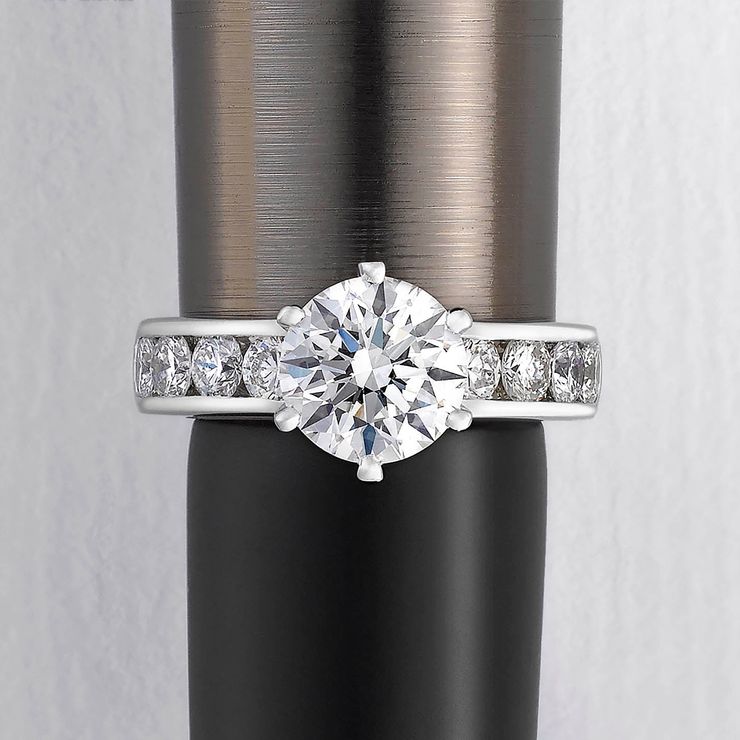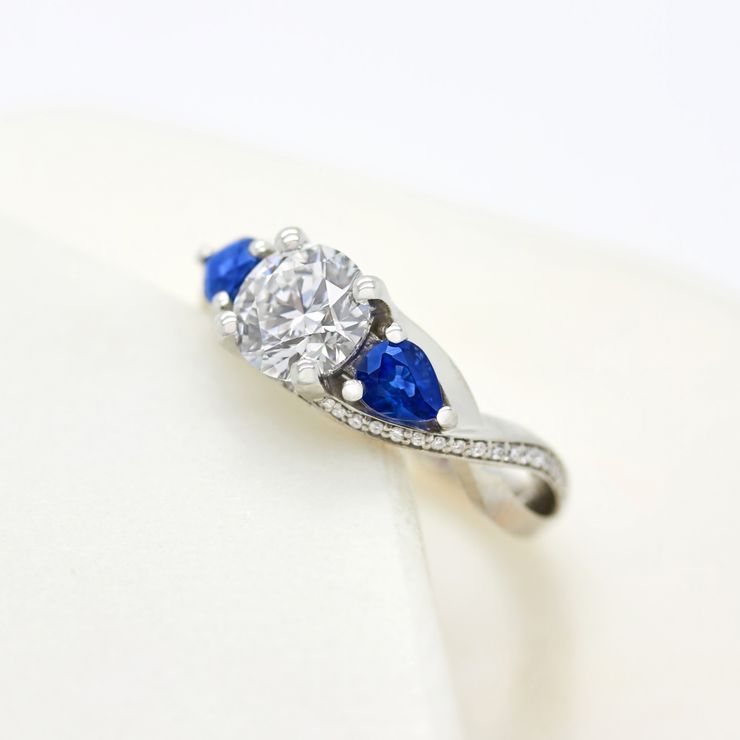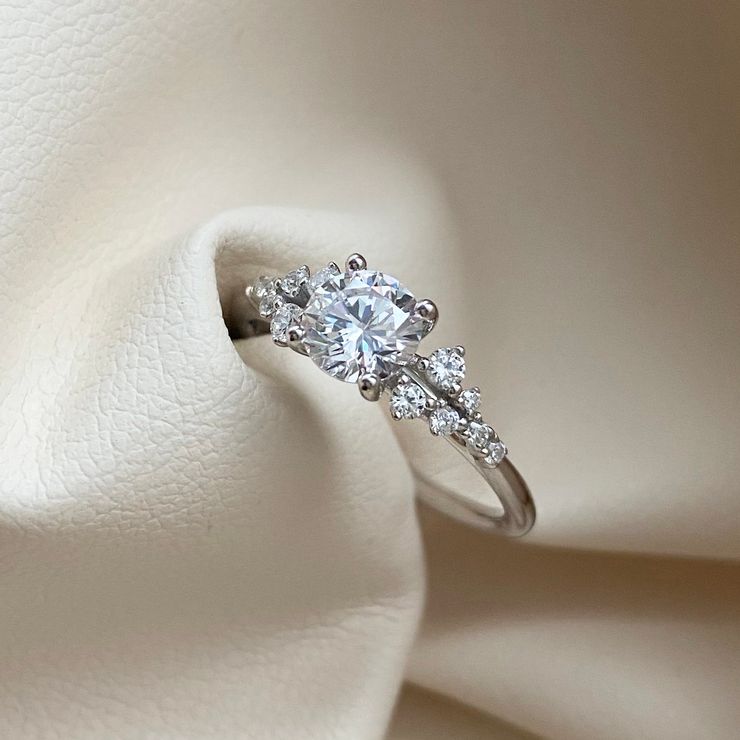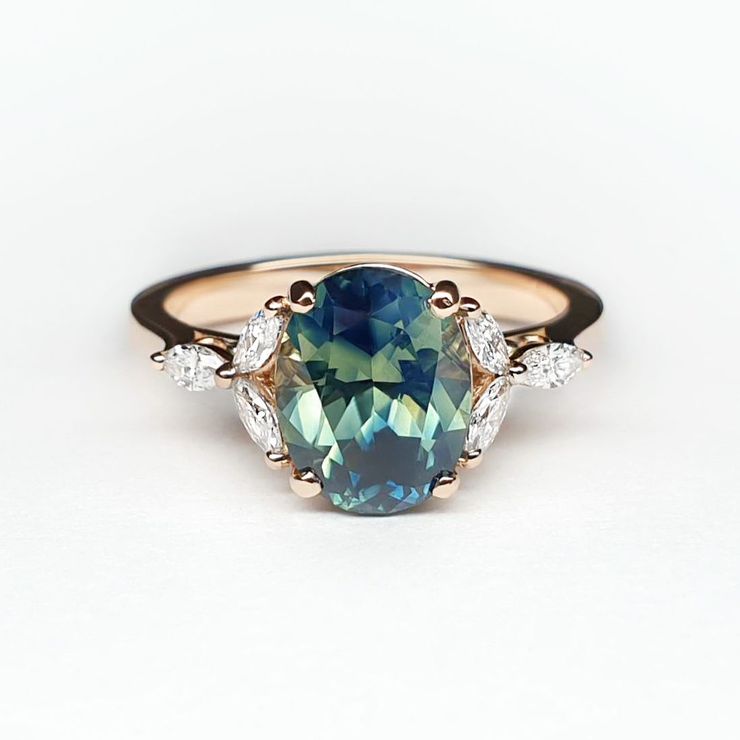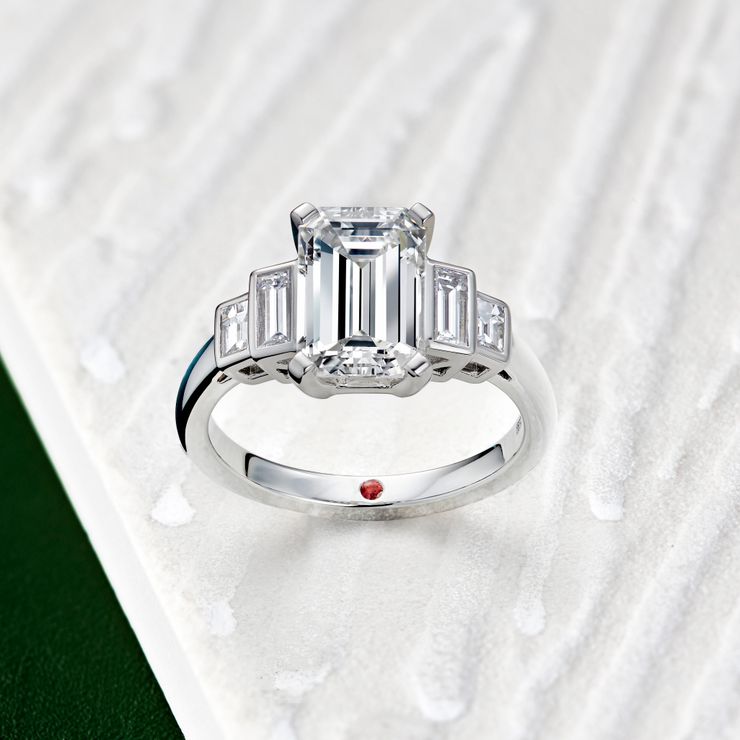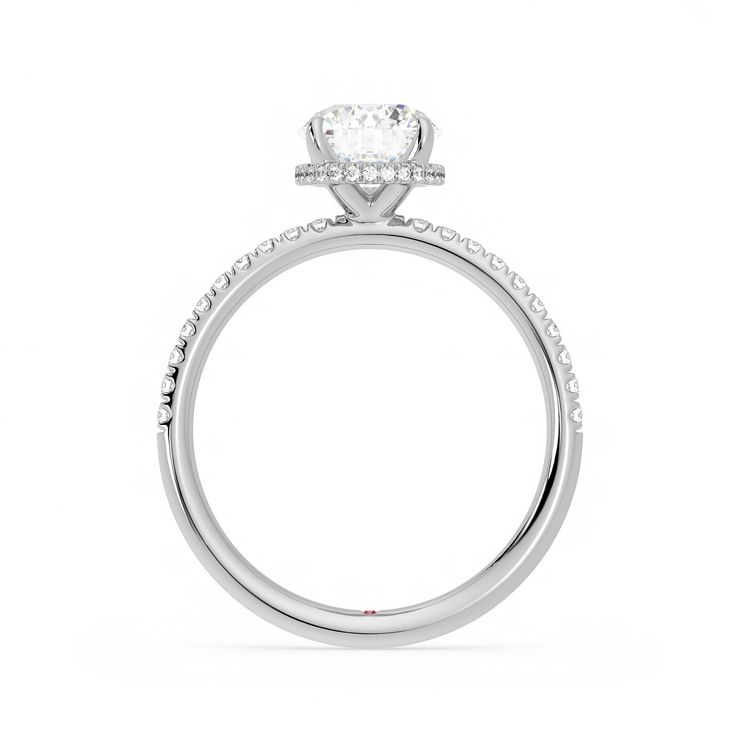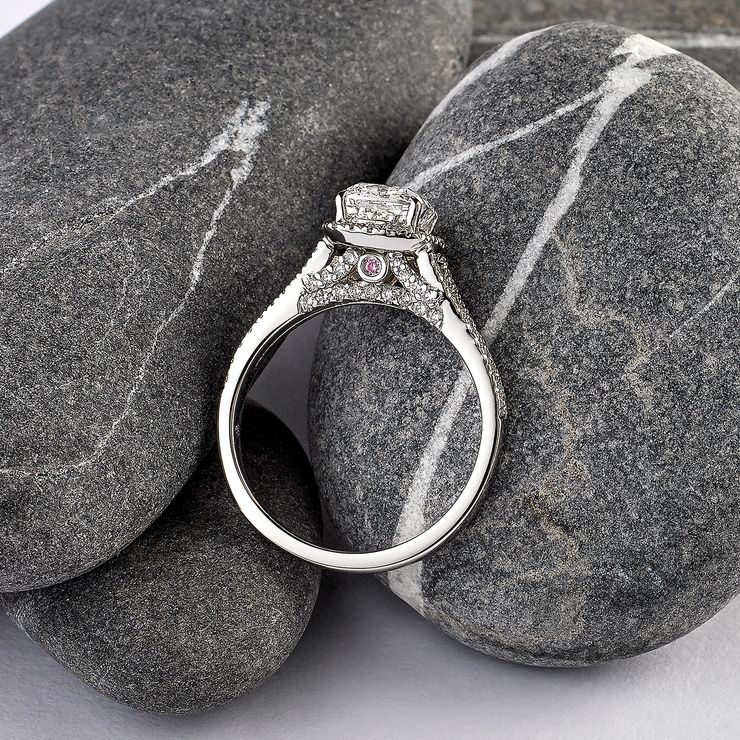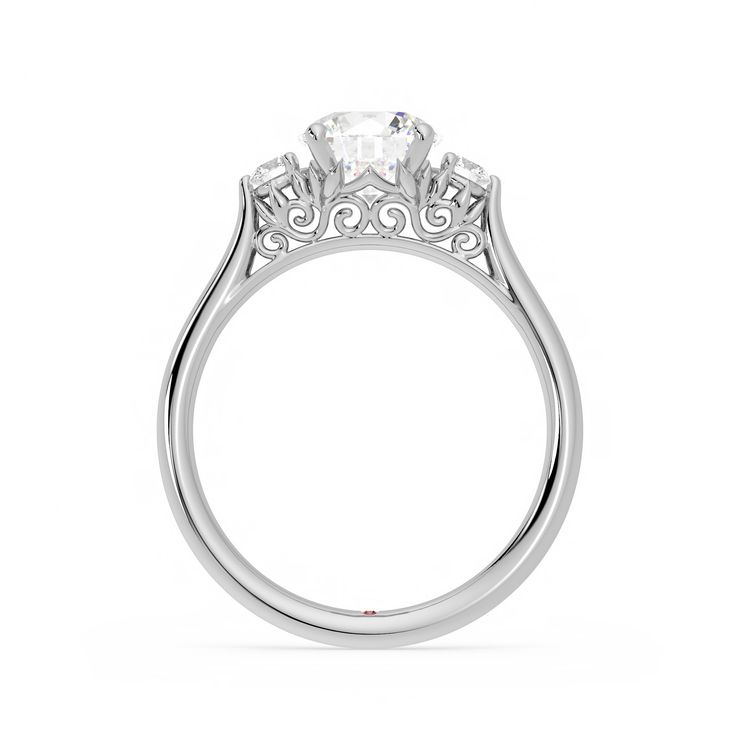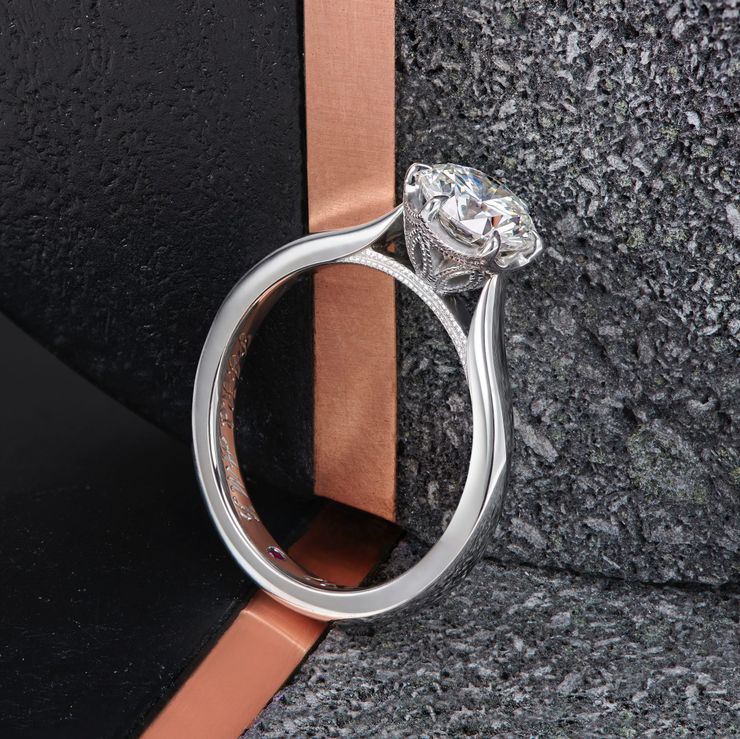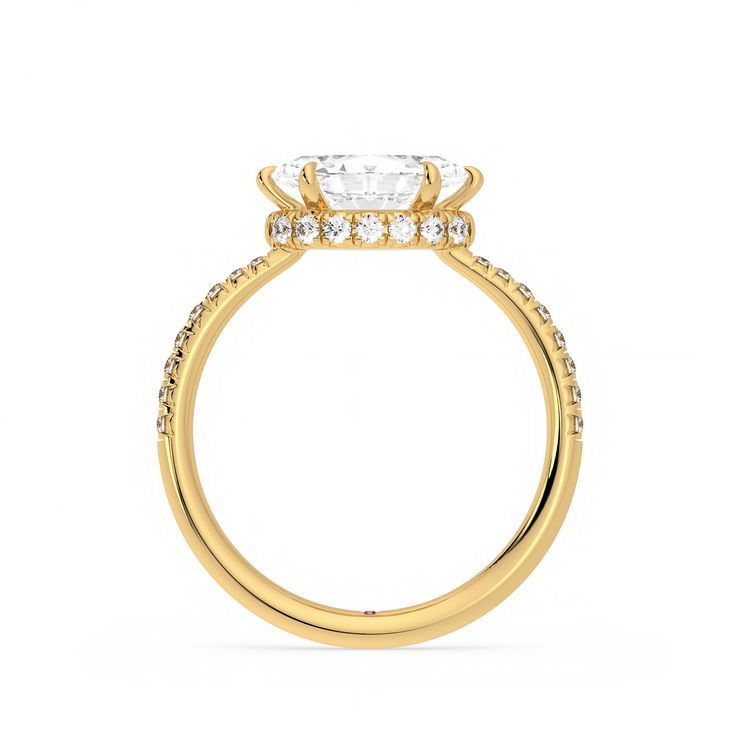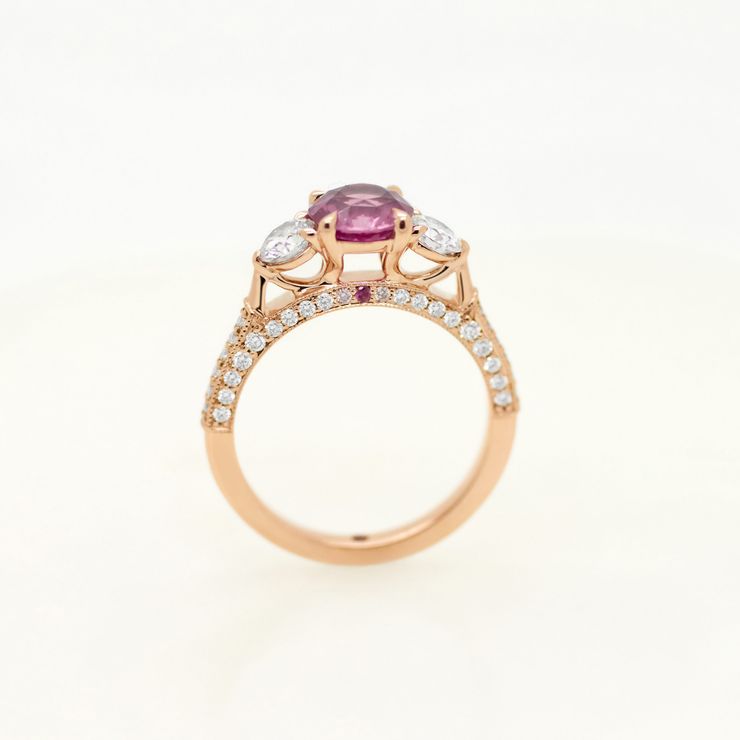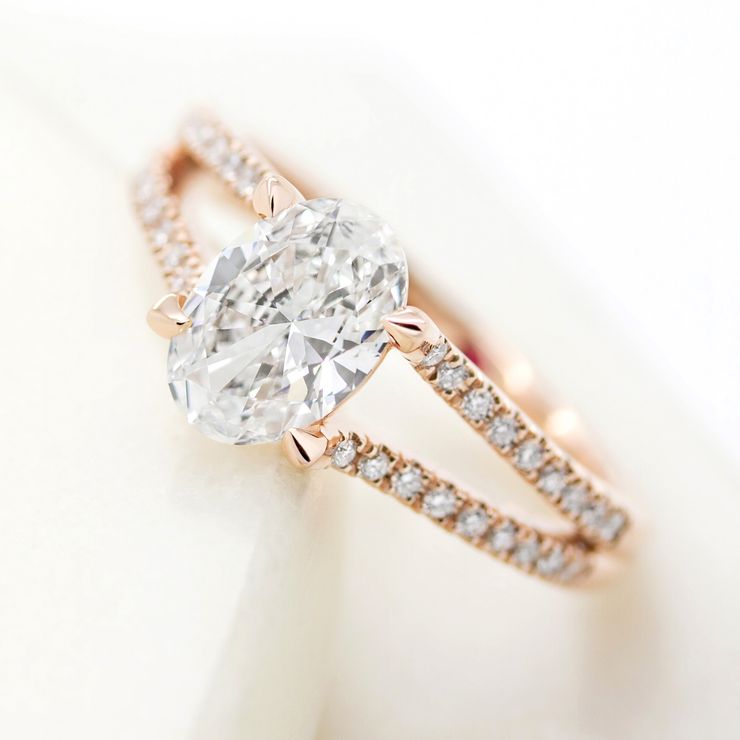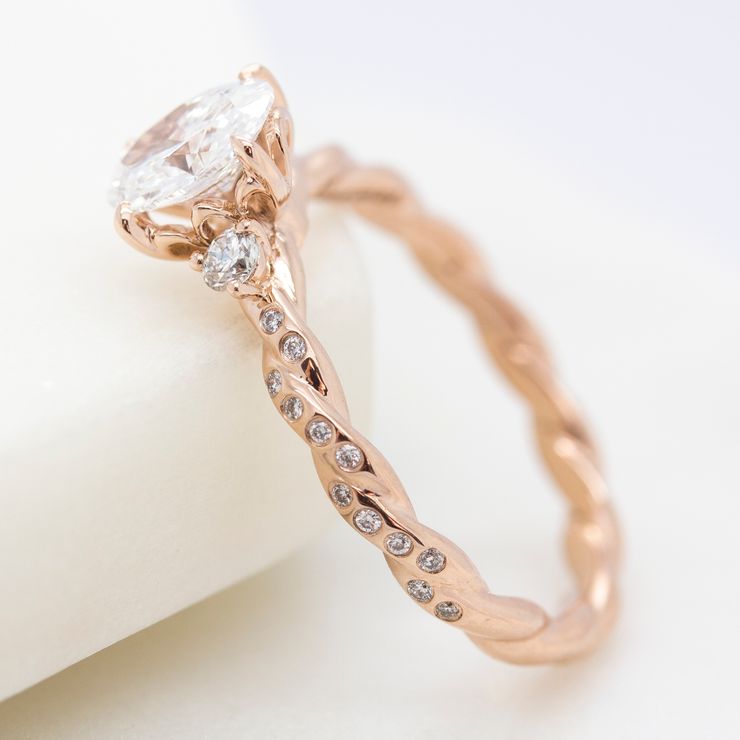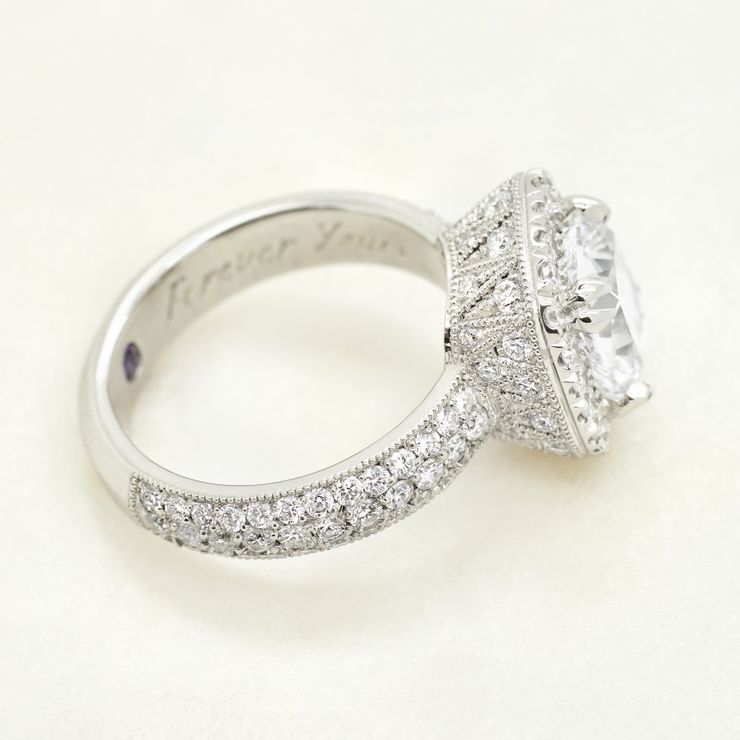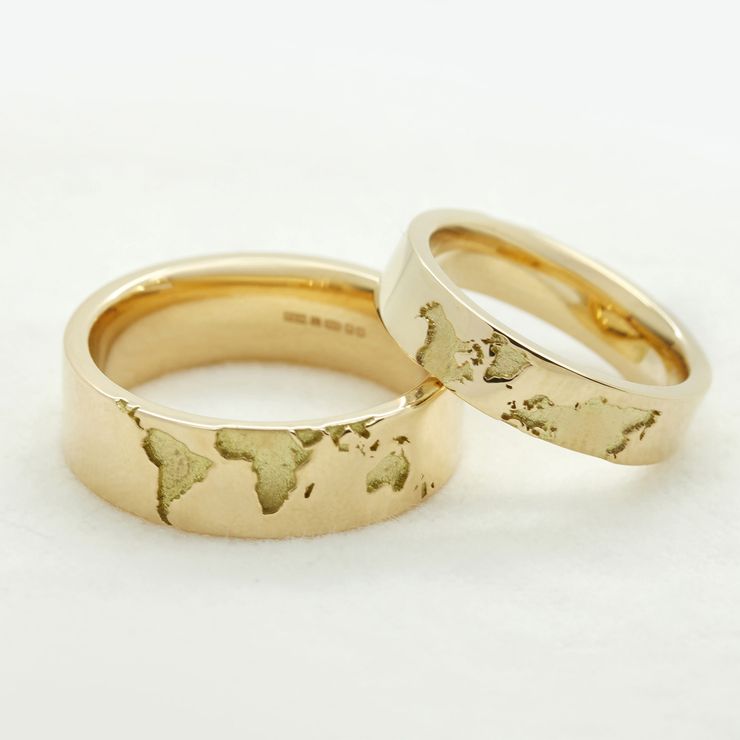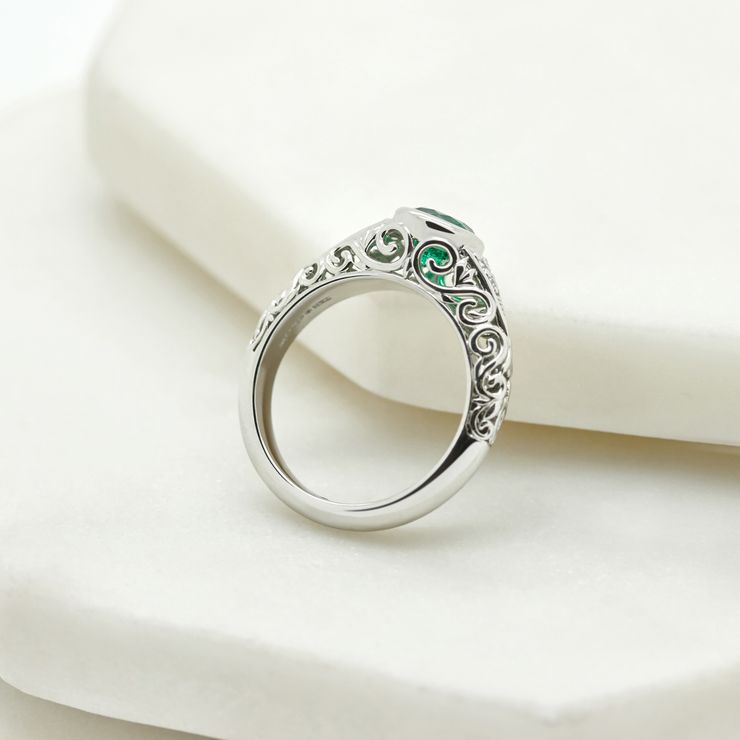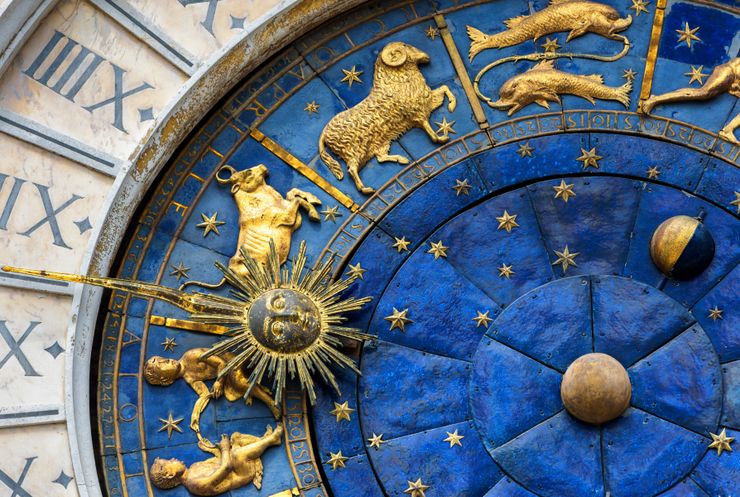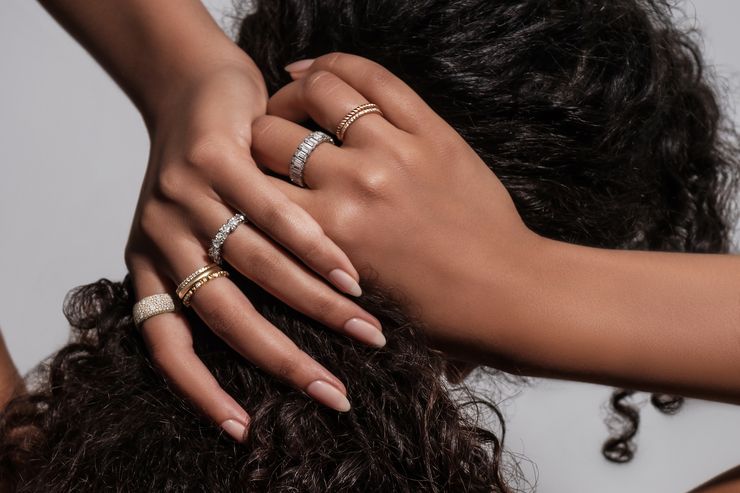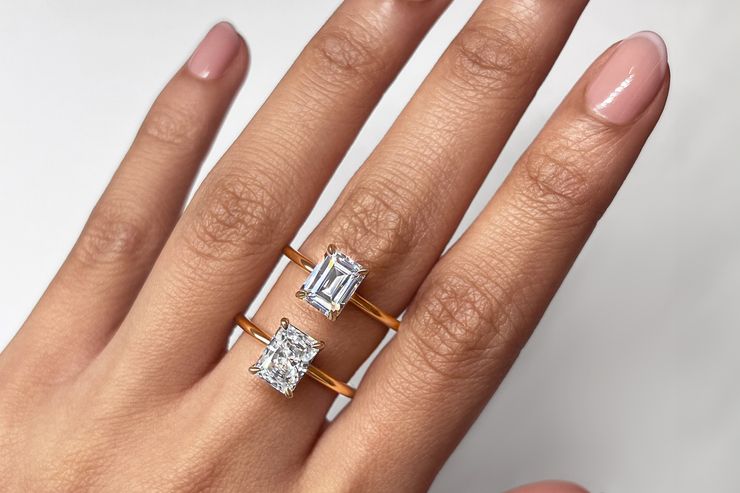The anatomy of a ring
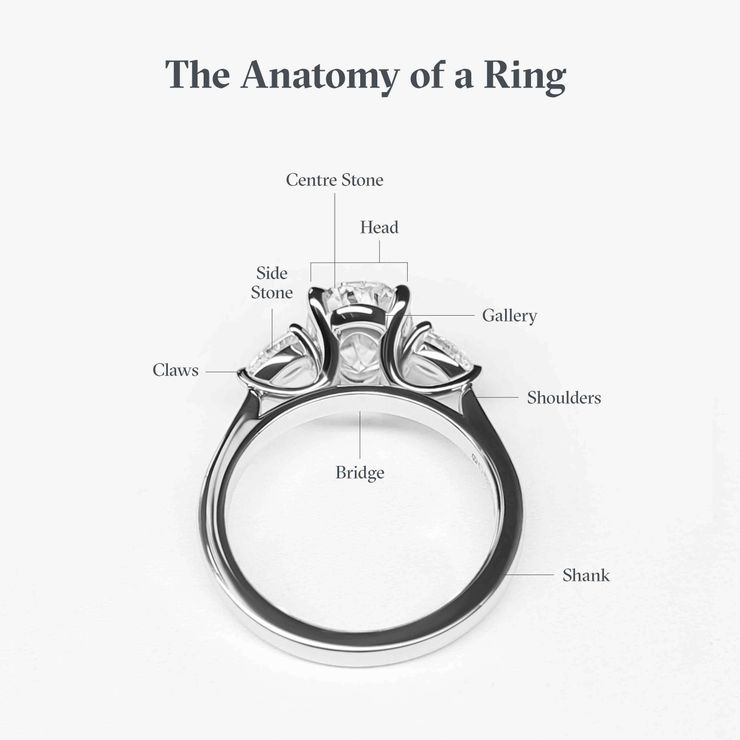
The Head
The head of the ring is made up of all the design elements that hold a stone in a ring. This includes the ring collet, which is the circular rim into which the centre diamond is set, and basket or the claws, which wrap around the centre diamond and secure it in place.
What are the most popular types of engagement ring setting?
Depending on the style of your ring, the head may also be referred to as the setting. The two most popular types of diamond ring setting are a claw setting (also known as a prong setting) and a bezel setting.
The Centre Diamond or Gemstone
The centre stone is the featured diamond or gemstone in a design. While there are also designs that have two centre stones (such as a Toi et Moi engagement ring) or no centre stone at all (like a cluster engagement ring), having one focal stone at the heart of your ring is the most common design type.
The centre diamond on an engagement ring typically ranges from 0.3 to 10+ carats. If you want a better picture of how big different carat weights look in real life, check out our diamond size guide.
Coloured gemstones are also a great choice for an engagement ring because they bring something unique to even the most traditional design. Popular gemstone choices include coloured diamonds, sapphires, rubies, emeralds, and paraiba tourmalines.
The Claws, or Prongs
The claws of the ring are the small metal fixings that grip the gemstones and hold them in place. In the United States, they’re often referred to as the ‘prongs’.
The two most common claw types are round claws and eagle claws (alternatively referred to as ‘round prongs’ and ‘claw prongs’ respectively). Claws come in single or double settings and most diamond shapes can be set with either four or six claws.
Other claw or prong types are square claws, petal claws, V-shaped claws, and bar claws.
Some people prefer more or larger claws because they create a highly secure setting, while some opt for daintier claws as they let more light into the gemstone, giving it a greater sparkle.
The Side Stones
The side stones, or ‘accent stones’, are arranged around the centre stone, and can match or contrast the centre stone in colour, shape, or style.
Trilogy engagement rings feature two prominent accent stones on either side of the centre stone. This style is beloved for its symbolism, as the three stones are meant to represent the past, present, and future of a lifelong relationship.
More intricate designs might feature clusters of side stones, marquise diamond petals, or up to 50 smaller side stones that complement the centre stone.
The Gallery
On an engagement ring the gallery is the part of the mount visible from the side or profile of the ring. A gallery can be sleek and minimal or feature intricate shapes and filigree.
A ‘hidden halo’ can be added to the gallery by setting a diamond pavé around the ring’s bezel (a thin bar that runs around the base of a gemstone).
The Bridge
The bridge is the stretch of metal that runs underneath the centre stone or gallery. The bridge can be a great place to include a personalised detail, like a small coloured gemstone. Some designs don’t have a bridge to give the appearance of the centre stone floating above the finger.
The band, or shank
The band is the portion of the ring that wraps around the finger. In the United States, it’s commonly referred to as the ‘shank’.
This is one of the most customisable pieces of any ring, so don’t hold back your creativity. Engravings, twists, milgrain, filigree, pavé, coloured gemstones—the width and profile of your band are up to you, so pick something that feels representative of your relationship.
That covers the basic components of an engagement ring and we hope it’s got you feeling inspired! A quality jeweller will be able to work with you to mix and match any of these elements into a ring that’s built to last a lifetime.
Browse our custom engagement ring gallery to see how different designs come to life.

